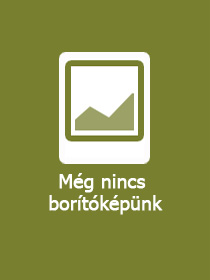
Laser-Induced Breakdown Spectroscopy in Biological, Forensic and Materials Sciences
-
8% KEDVEZMÉNY?
- A kedvezmény csak az 'Értesítés a kedvenc témákról' hírlevelünk címzettjeinek rendeléseire érvényes.
- Kiadói listaár EUR 213.99
-
90 774 Ft (86 451 Ft + 5% áfa)
Az ár azért becsült, mert a rendelés pillanatában nem lehet pontosan tudni, hogy a beérkezéskor milyen lesz a forint árfolyama az adott termék eredeti devizájához képest. Ha a forint romlana, kissé többet, ha javulna, kissé kevesebbet kell majd fizetnie.
- Kedvezmény(ek) 8% (cc. 7 262 Ft off)
- Discounted price 83 512 Ft (79 535 Ft + 5% áfa)
90 774 Ft

Beszerezhetőség
Még nem jelent meg, de rendelhető. A megjelenéstől számított néhány héten belül megérkezik.
Why don't you give exact delivery time?
A beszerzés időigényét az eddigi tapasztalatokra alapozva adjuk meg. Azért becsült, mert a terméket külföldről hozzuk be, így a kiadó kiszolgálásának pillanatnyi gyorsaságától is függ. A megadottnál gyorsabb és lassabb szállítás is elképzelhető, de mindent megteszünk, hogy Ön a lehető leghamarabb jusson hozzá a termékhez.
A termék adatai:
- Kiadás sorszáma Second Edition 2025
- Kiadó Springer
- Megjelenés dátuma 2025. június 13.
- Kötetek száma 1 pieces, Book w. online files / update
- ISBN 9783031859748
- Kötéstípus Keménykötés
- Terjedelem637 oldal
- Méret 235x155 mm
- Nyelv angol
- Illusztrációk 20 Illustrations, black & white; 128 Illustrations, color 700
Kategóriák
Rövid leírás:
The 2nd edition of this book builds on the success of its predecessor, offering a comprehensive overview of recent advances and emerging applications in the area of laser-induced breakdown spectroscopy (LIBS). The new edition expands LIBS fundamentals and presents new case studies of applications to biological sciences. Readers will also find an updated perspective of LIBS applications to forensic and materials sciences.
LIBS, which was previously mainly used by physicists, chemists and in the industry, has now become a very useful tool with great potential in these other fields as well. LIBS has a unique set of characteristics including minimal destructiveness, remote sensing capabilities, potential portability, extremely high information content, trace analytical sensitivity and high throughput. With its content divided into two main parts, this book provides not only an introduction to the analytical capabilities and methodology but also an overview of the results of recent applications in the above fields. The application-oriented, multidisciplinary approach of this work is also reflected in the diversity of the expert contributors. Topics added to this new edition include:
- Application of nanostructures in LIBS
- LIBS food analysis
- Cancer diagnostics using LIBS
- LIBS in nuclear and fusion research
- Microplastics detection using LIBS
- Tag-LIBS in biological applications
Given its breadth, this book will appeal to students, researchers and professionals interested in solving analytical/diagnostic/material characterization tasks with the application of LIBS. Supplementary videos can be accessed online as well as directly from the print book; simply download the Springer Nature More Media App for free and scan the links with the play button.
TöbbHosszú leírás:
The 2nd edition of this book builds on the success of its predecessor, offering a comprehensive overview of recent advances and emerging applications in the area of laser-induced breakdown spectroscopy (LIBS). The new edition expands LIBS fundamentals and presents new case studies of applications to biological sciences. Readers will also find an updated perspective of LIBS applications to forensic and materials sciences.
LIBS, which was previously mainly used by physicists, chemists and in the industry, has now become a very useful tool with great potential in these other fields as well. LIBS has a unique set of characteristics including minimal destructiveness, remote sensing capabilities, potential portability, extremely high information content, trace analytical sensitivity and high throughput. With its content divided into two main parts, this book provides not only an introduction to the analytical capabilities and methodology but also an overview of the results of recent applications in the above fields. The application-oriented, multidisciplinary approach of this work is also reflected in the diversity of the expert contributors. Topics added to this new edition include:
- Application of nanostructures in LIBS
- LIBS food analysis
- Cancer diagnostics using LIBS
- LIBS in nuclear and fusion research
- Microplastics detection using LIBS
- Tag-LIBS in biological applications
Given its breadth, this book will appeal to students, researchers and professionals interested in solving analytical/diagnostic/material characterization tasks with the application of LIBS. Supplementary videos can be accessed online as well as directly from the print book; simply download the Springer Nature More Media App for free and scan the links with the play button.
Több
Tartalomjegyzék:
Part 1: Fundamentals.- Chapter 1: Principle of operation and instrumentation of LIBS .- Chapter 2: Quantitative LIBS analysis.- Chapter 3: Calibration-free quantitative LIBS analysis.- Chapter 4: Qualitative discrimination by LIBS.- Chapter 5: State-of-the-art LIBS analytical performance.- Part 2: Applications.- Chapter 6: Preclinical evaluation of nanoparticle behavior in biological tissues by LIBS.- Chapter 7: LIBS imaging of biological tissues.- Chapter 8: LIBS qualitative classification of biological materials.- Chapter 9: Nanoparticle-enhanced LIBS on biological samples.- Chapter 10: LIBS analysis of forensic trace evidence.- Chapter 11: Advanced polymer characterization by LIBS.- Chapter 12: Materials characterization by laser-induced plasma acoustics and spectroscopy.- Chapter 13: Characterization and application of nanostructures in LIBS.- Chapter 14: Data fusion in LIBS food analysis.- Chapter 15: LIBS studies of renal calculi and their impact on nails.- Chapter 16: Cancer diagnostics using LIBS.- Chapter 17: LIBS in nuclear and fusion research.- Chapter 18: Detection and classification of microplastics using LIBS.- Chapter 19: Tag-LIBS in biological applications.- Chapter 20: LIBS analysis ofindustrial composite materials.
Több

Laser-Induced Breakdown Spectroscopy in Biological, Forensic and Materials Sciences
Iratkozzon fel most és részesüljön kedvezőbb árainkból!
Feliratkozom
90 774 Ft



